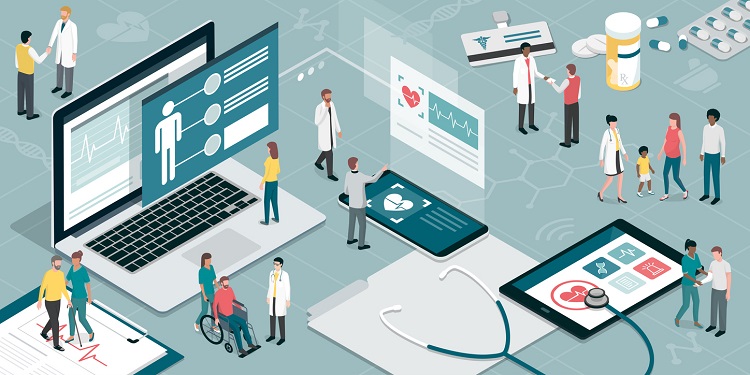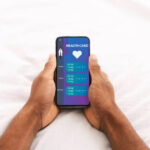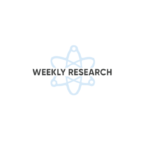About two-thirds of Medicare beneficiaries have two or more chronic conditions. This population benefits from chronic care management but can also benefit from remote patient monitoring. Hence, this article explains how chronic care management and remote patient monitoring maximize clinical outcomes. Before we compare the two, it’s important to understand what CCM and RPM are on their own.
Chronic Care Management and Remote Patient Monitoring – Maximizing Outcomes
Chronic Care Management (CCM) was introduced in 2015 to help compensate clinicians for caring for patients with chronic conditions. Those eligible for CCM services must have “two or more chronic conditions that are expected to last at least 12 months or until the death of the patient.” Additionally, patients must be at high risk of functional decline or harm.
Chronic Care Management requires an electronic personal care plan and 24/7 access to a physician, qualified healthcare professional, or clinical staff. Therefore, clinicians must use a certified electronic health record (EHR) to record a patient’s comprehensive care plan.
The plan must include:
- A list of problems
- Expected outcome and prognosis
- Treatment goals
- Symptom management
- Care providers
- Medications
- A description of how services of agencies and specialists outside the practice are directed or coordinated
- Schedule for periodic review and revision of care plan when necessary
Remember that the electronic care plan must be shared with and made easily accessible to the patient and all care providers involved. New patients or patients who have not seen the physician within 12 months must initiate CCM services in person. If a patient has multiple physicians, it’s essential to understand that only one clinician can bill CCM services for that patient.
What Constitutes a Chronic Care Management Service?
Every month, at least 20 minutes must be spent on chronic care management services. CCM services include:
- The initial visit to begin CCM services
- Using certified EHR to record patient information
- 24/7 access to care
- Routine checkups
- Making sure that the patient is taking their medications
- Creating, revising, or monitoring the comprehensive care plan
- Managing transitions of care
- Communication with home- and community-based providers
It’s essential to document time spent on services performed. These details are submitted when billing Medicare for Chronic Care management services.
Understanding Remote Patient Monitoring
Remote patient monitoring utilizes FDA-cleared medical devices to monitor vital signs like blood pressure, weight, blood glucose, and lung capacity. By implementing RPM, clinicians can:
- Improve timeliness of care
- Generate more revenue (monthly Medicare reimbursements)
- Treat more patients
- Reduce wait times
- Gather data over time to accurately represent a patient’s health.
- Focus on prevention and early management of chronic diseases rather than treatment.
- Improve relationships with their patients
- Boost patient retention
- Support patient self-management in between appointments
- Ensure that treatment plans are working or make changes if necessary
- Reduce hospital admissions and total healthcare costs
Medicare recognizes that RPM helps reduce total healthcare costs by focusing on preventing and early intervention of chronic diseases. Medicare relaxed its CPT codes for RPM services to encourage more clinicians to implement RPM. Due to this change, clinicians can generate additional revenue without increasing their workload by contracting third-party remote monitoring companies and billing “incident to” under general supervision.
Firstly, remote patient monitoring with connected health devices helps care providers closely monitor chronic care management patients in between visits. While clinicians can bill CCM and RPM services in the same month, time allocated for RPM services cannot be counted again towards CCM.
Second, both services are billed “incident to” under general supervision. Clinical staff activities can be subcontracted as long as all “incident to” and physician fee schedule rules are met. Sufficient clinical integration is required between the contracted company and the billing physician. Tasks that the billing practitioner must personally perform cannot be subcontracted to third-party companies.
In general, CCM primarily relies on communication with patients. By adding RPM, care providers also rely on accurate health data to help them analyze the effectiveness of care plans and make adjustments. Because of this, patients feel assured that they are well cared for in their day-to-day lives, promoting better engagement and adherence to care plans.
Billing for Chronic Care Management and Remote Patient Monitoring
Chronic care management and remote patient monitoring use different codes which reflect a different value and amount of time that is dedicated to RPM or CCM. CMS adopted 5 RPM CPT codes (99453, 99454, 99457, 99458, and 99091) to ramp up incentives for remote patient monitoring. As a result, CPT codes help itemize services, such as device setup, collection, interpretation, and processing of remote physiologic data.
It is important to remember is that different CPT codes within remote patient monitoring cover chronic care management. The 5 CPT codes for RPM are listed in the below section. Following that section you will find CCM CPT codes and their corresponding rates. It is important to note that these rounded numbers are based on non-facility national averages and vary by region.
RPM Billing Rates
CPT 99453: This code is for device setup and is submitted for initial setup and patient education on the use of equipment. The payment is $19.65 once per episode of care.
CPT 99454: This billing code covers remote monitoring and is submitted monthly for supplying patients with an FDA-cleared RPM device. The patient must use the device for over 16 days per calendar month. The payment is $46.50 during a 30-day period.
CPT 99457: The treatment management billing code is for the initial 20 minutes of treatment management services for clinical staff, physicians, or other qualified healthcare professionals time in a calendar month. The payment is $48.14 per month.
CPT 99458: An additional 20 minutes of remote monitoring may be submitted for each additional 20 minutes of RPM services, with a maximum of 60 minutes in a calendar month. The payment is $38.64 per month.
CPT 99091: Data interpretation is the time it takes clinical staff to gather, interpret, and process data, at least 30 minutes in a calendar month. The payment is $52.71 per month.
CCM Billing Rates
CPT 99490: Payment for a minimum of 20 cumulative minutes over 30 days of non-face-to-face time monitoring the care plan. This payment rate is $61.57.
CPT 99491: Covers the initial 30 minutes of care the physician or qualified healthcare professional provides. This payment rate is $83.18.
CPT 99437: Additional 30 minutes of care a physician or qualified healthcare professional provides. This payment rate is $58.62.
CPT 99439: This is for any additional 20 minutes of care clinical staff provides. This payment rate is $47.16.
Complex CCM CPT codes and Rates
CPT 99487: Covers a minimum of 60 cumulative minutes over 30 days of non-face-to-face consultation, establishing or monitoring a care plan. This payment rate is $131.97.
CPT 99489: Pays for each additional 30 minutes of non-face-to-face consultations. This payment rate is $71.06.
Chronic Care Management and Remote Patient Monitoring: Key Points
While all CCM patients are eligible for RPM services, not all are eligible for CCM services. To qualify for chronic care management and remote patient monitoring patients must have 2+ high-risk chronic conditions that are expected to last at least 12 months or until the patient dies.
On the positive side, RPM makes CCM a complete solution by collecting health data that provides more accurate insight for better decision-making. Using both chronic care management and remote patient monitoring encourages proactive care over reactive care, improves patient engagement, and generates more revenue for clinics while promoting efficient allocation of resources.
Whether your healthcare partners are interested in adopting remote patient monitoring to increase patient engagement, create more efficient workflows, or increase revenue – Tenovi can help you find a better solution. Book a free demo today.






